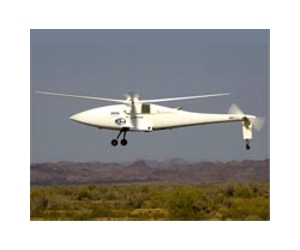DRDO Working On Unmanned Combat Air Vehicles
DRDO Working On Unmanned Combat Air Vehicles | India Defence
Agency reports have suggested that DRDO has begun working on unmanned combat air vehicles for a possible procurement by the Indian Air Force. Press Trust of India has quoted a senior DRDO official saying that work for the UCAV is in parallel progress in labs across the country.
The following quotes are attributed to P.S. Subramanyan, Project Director of Aeronautical Development Agency (a DRDO lab):
-- "We have identified all the technologies required for the unmanned combat air vehicle ... Technologies include flying wing and stealth, which was most important"
-- "Work on the project has begun in different parts of the country, including in laboratories. Technologies are now getting evolved and we are working on configuration in parallel and eventually at some stage user (IAF) requirements will be matched into the design"
An unmanned combat air vehicle (UCAV) or "combat drone" is an experimental class of unmanned aerial vehicle (UAVs). They differ from ordinary UAVs, because they are designed to deliver weapons (attack targets) – possibly with a great degree of autonomy. The elimination of the need for an on-board human crew in a combat aircraft that may be shot down over enemy territory has obvious advantages for personnel safety.
In addition, much equipment necessary for a human pilot (such as the cockpit, flight controls, oxygen, seat/ejection seat, etc.) can be omitted from an unmanned vehicle, resulting in a decrease in weight possibly allowing greater payloads, range and maneuverability.
DRDO Working On Unmanned Combat Air Vehicles | India Defence
Agency reports have suggested that DRDO has begun working on unmanned combat air vehicles for a possible procurement by the Indian Air Force. Press Trust of India has quoted a senior DRDO official saying that work for the UCAV is in parallel progress in labs across the country.
The following quotes are attributed to P.S. Subramanyan, Project Director of Aeronautical Development Agency (a DRDO lab):
-- "We have identified all the technologies required for the unmanned combat air vehicle ... Technologies include flying wing and stealth, which was most important"
-- "Work on the project has begun in different parts of the country, including in laboratories. Technologies are now getting evolved and we are working on configuration in parallel and eventually at some stage user (IAF) requirements will be matched into the design"
An unmanned combat air vehicle (UCAV) or "combat drone" is an experimental class of unmanned aerial vehicle (UAVs). They differ from ordinary UAVs, because they are designed to deliver weapons (attack targets) – possibly with a great degree of autonomy. The elimination of the need for an on-board human crew in a combat aircraft that may be shot down over enemy territory has obvious advantages for personnel safety.
In addition, much equipment necessary for a human pilot (such as the cockpit, flight controls, oxygen, seat/ejection seat, etc.) can be omitted from an unmanned vehicle, resulting in a decrease in weight possibly allowing greater payloads, range and maneuverability.

















